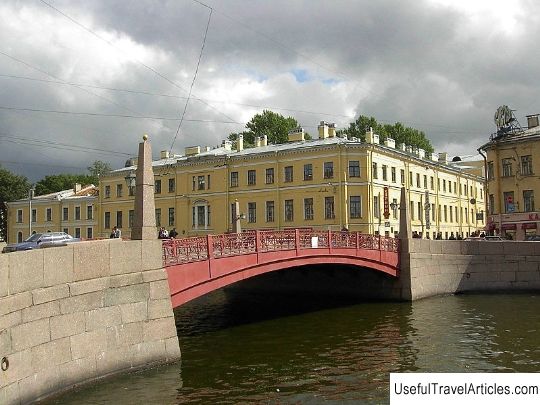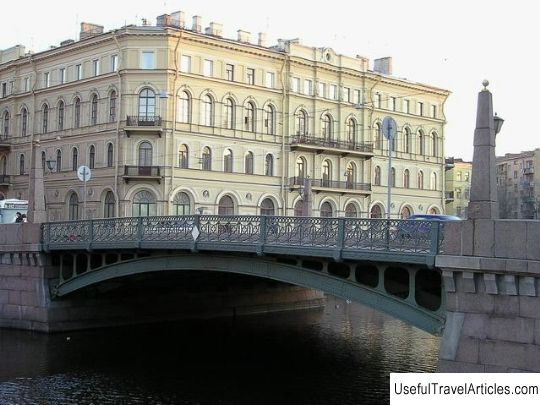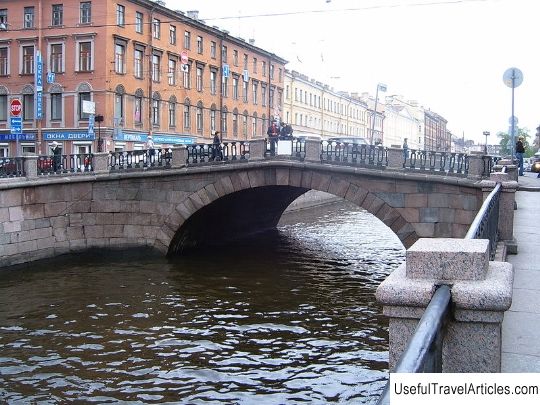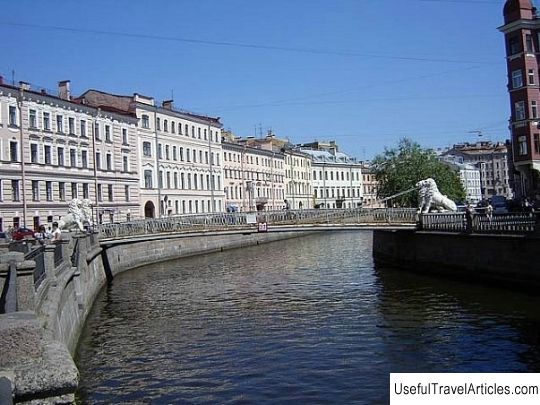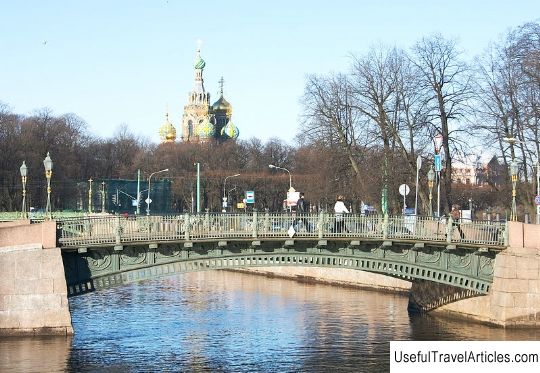Troitsky Bridge description and photo - Russia - St. Petersburg: St. Petersburg
Rating: 8,2/10 (1983 votes) 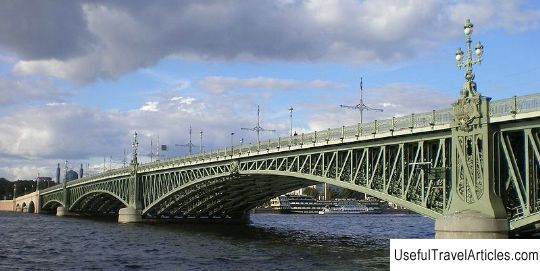
Troitsky Bridge description and photos - Russia - Saint Petersburg: Saint Petersburg. Detailed information about the attraction. Description, photos and a map showing the nearest significant objects. Photo and descriptionThe Trinity Bridge connects the central part of St. Petersburg with its Petrograd side and is rightfully considered one of the most beautiful drawbridges in the city. In technical terms, it is a combination of cantilever-arched and cantilevered-beam structures with a total length of more than half a kilometer. Troitsky became the third permanent bridge built in St. Petersburg. However, initially on this place (since 1803) there was a pontoon (floating, resting on flat-bottomed ships) bridge, called Petersburg. It was renovated in 1824. The decision to reconstruct was made due to its dilapidation and operational difficulties. Also, it became necessary to bring the appearance of the bridge and the surrounding architectural ensembles into conformity. Initially it was planned to name the bridge Suvorov in honor of the commander A.V. Suvorov, whose monument was in the immediate vicinity. But, in the end, the bridge was named Troitsky after Trinity Square and the cathedral of the same name (the latter, unfortunately, was blown up in 1932). At the time of the completion of the restoration in 1827, Troitsky was the longest in St. Petersburg as a pontoon bridge. Unlike other bridges of a similar design, Troitsky was richly decorated with cast-iron portals, railings, lampposts of artistic casting. The middle lampposts were crowned with the figures of a two-headed eagle. Pyramidal obelisks were decorated with overhead details - oval shields against the background of crossed swords. Gold leaf covered individual copper and cast iron elements. After the repair, the pontoon Troitsky bridge remained in operation for another 70 years. The need to create a permanent bridge arose at the end of the 19th century. for reasons of changing operating conditions. The loads became more and more, and a bridge of a stronger structure was needed. In April 1892, by decision of the City Duma, an international competition was announced for the best design of the new bridge. A total of 16 projects were submitted for the competition, and only five of them belonged to the authorship of Russian architects. Others turned out to be projects of French, Bulgarian, Dutch, Hungarian and Spanish bridge builders. The first prize was awarded to the project of the French company G. Eiffel (the creator of the Eiffel Tower). The second prize went to the Russian engineers K. Lembke and E. Knorre, and the third to the Bulgarian architect P. Momchilov. Remarkably that none of these projects was ever taken into service. The preference of the competition committee was given to the French firm "Batignol", which presented its project using "structures of three-articulated arches with consoles" out of competition. The project turned out to be attractive for the reason that it allowed to significantly reduce metal consumption and make the structure lighter. Four years later, a second tender was announced, and a contract was concluded with the Batignol company, a special clause of which was the condition that the construction of the bridge will be carried out by Russian workers and from Russian materials. A large number of Russian engineers and members of the St. Petersburg Academy of Arts participated in the development of the final project. The builders of the bridge were engineers I. Landau, A. Floche, E. Bonneve, E. Hertsenstein and others. The construction of the embankments was carried out by A. Smirnov and E. Knorre. Simultaneously with the construction of the bridge, granite embankments were being built on the right bank of the Neva, connecting the Troitsky, Ioannovsky and Sampsonievsky bridges. The total length of embankments with marinas for boats and ships, slopes to the water and stairs was 1100 m. The completion of construction and the grand opening of the bridge (May 16, 1903) was timed to coincide with the celebration of the bicentennial of St. Petersburg. After the 1917 revolution, the bridge was renamed twice. From 1918 to 1934 it was called the Bridge of Equality, in 1934 -1991. - Kirovsky bridge. During the Great Patriotic War and the blockade, the bridge was not badly damaged. During its existence, it was reconstructed twice: in 1965-1967. and in 2001-2003.                We also recommend reading City Hall (Ayuntamiento) (Ayuntamiento) description and photos - Spain: Seville Topic: Troitsky Bridge description and photo - Russia - St. Petersburg: St. Petersburg. |
